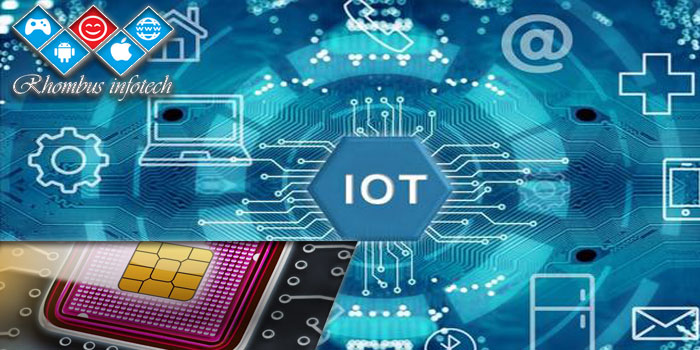Until now, the SIM card has been an additional piece of hardware which had to inserted into IoT devices but now nuSIM is entirely a different concept of technology (Embedded Technology) the features of nuSIM card are integrated directly into the communication chip set. This new technology not only saves the production time but also cuts down the cost factor, and IoT devices with this technology consumes less power and is the best option if the device is intended to function for several years with just one battery. This is the main reason nuSIM technology is best suited for compact devices with longer battery life used as smart trackers and parking sensors.
nuSIM technology is simple, secure & affordable. Some examples of nuSIM technology are given below:
- Sensors in the containers measure the fill level of bins and notify the collection service when it is due to be emptied. Cost effective solution for large scale deployments. Without a SIM card slot, the sensor and nuSIM both are protected against moisture, dirt and temperature fluctuations.
- Smart nuSIM sensors reports whether a parking space is free or occupied & low cost nuSIM lowers down the overall investment when many parking sensors are to be deployed.
- Effective & robust sensing trackers with long battery life track goods throughout the entire supply chain management. The low cost nuSIM technology is suitable for many tracking & shipment software applications. nuSIM makes it possible to create smallest designs because a separate SIM architecture is no longer required. Lower power consumption means nuSIM based devices can be used over long distances & for multiple times without battery change. Without SIM card slot, the trackers can work in extreme conditions also.
With the nuSIM, the integrated SIM is now being further developed especially for applications in the Internet of Things where the cost factor is decisive. The nuSIM is also less sensitive to shocks or large temperature fluctuations than the SIM in a card slot. The absence of a slot also makes possible the closed design of a device and protects it from moisture and dust. The nuSIM thus achieves a service life of at least 10 years, in other words it usually lasts as long as the component itself. This technology provides strong identification and authentication of devices to the network and can act as the trust anchor for secure communications at a lower cost and potential higher security than discrete devices. It enables users to change operator remotely, straight from their phone, without having to acquire a new SIM card. It also allows people to store multiple profiles on a single device, effectively having two or more numbers, and switch between them at ease.
This technology will not just be used in smartphones, but also in a range of consumer devices which require always-on connectivity. This includes wearables, such as smartwatches and smart glasses, connected home devices, and computing devices such as laptops and tablets.
nuSIM will also benefit businesses that use IoT systems, and in particular businesses that have large scale machine-to-machine deployments such as oil and gas, power plants, manufacturing facilities and warehouses. For example, if a company uses thousands of individual pieces of hardware that require mobile connectivity, it involves installing a SIM card into each unit, which would be a painstaking task. Businesses can remotely connect all of this technology to a mobile network. Furthermore, if the technology is required to operate in another country, it can be programmed remotely to connect to a local operator in that region. It uses less space and is cheaper than traditional SIM technology. This means that mobile connectivity can now be introduced into hardware where it was previously not feasible due to cost or space restrictions.

